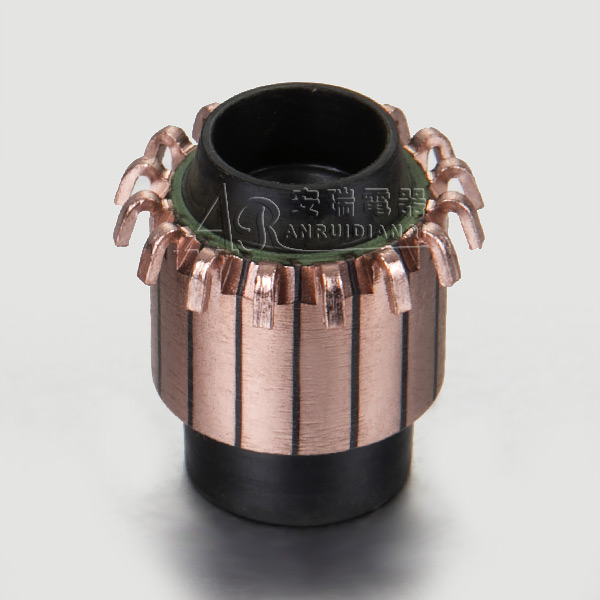

The new type commutator adopts an integrated commutating piece, that is, the commutating piece with the rising piece is integrally stamped, which overcomes the problems caused by the welding of the rising piece and the commutating piece in the prior art. The commutator is provided with grooves at a distance from the working surface where the commutator segments are assembled, and a weft-free belt is bound in the grooves. Through this structure, the deformation of the commutator is controlled within the specified range to ensure the reliable operation of the motor. The principle of the commutator is that when the coil passes current, it will be rotated by attraction and displacement under the action of the magnet. When it is turned to balance with the magnet, the original energized wire is stronger than the contact on the corresponding commutator. The sheet is separated from the brush, and the brush is connected to the contact sheet corresponding to the set of coils that produces the driving force, so that the DC motor will start to rotate after repeating it.
The commutator mainly has hook type, groove type, flat type and other specifications. Refined from imported raw materials, the performance of the product has reached an advanced level, and it is widely used in power tools, household appliances, automobiles, motorcycle motors and other fields; collector rings, carbon brush holders, and wiring boards have various specifications and models, which are used in Automobile generators, gasoline generators and other fields. The commutator functions as a rectifier, and its function is to make the direction of the current in the armature winding alternate to ensure that the direction of the electromagnetic torque remains unchanged. In the generator, the commutator can make the alternating electric potential in the element into the direct electric potential between the brushes; in the motor, he can make the external direct current into the alternating current in the element, producing a constant direction torque.
The influence of the commutator on the performance of the motor depends on the process of circuit conduction when it slides with the brush at a relatively high speed under the conditions. Although the description of this process is more complicated and theoretical research is still under development, through comparative analysis of the operating conditions of micromotors, it can be determined that wear is the key factor leading to changes in contact resistance.
